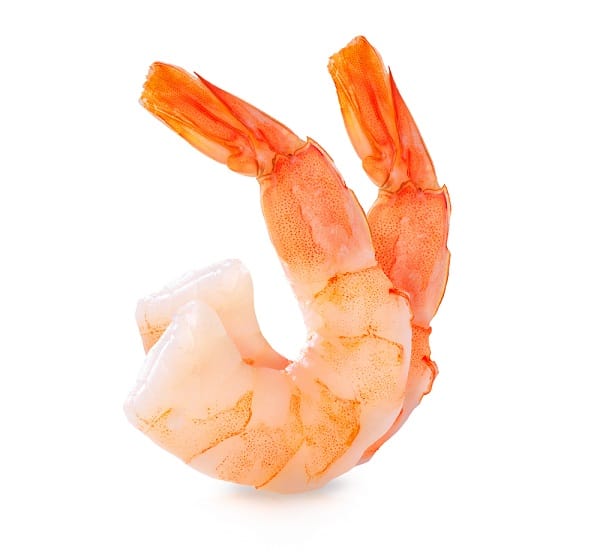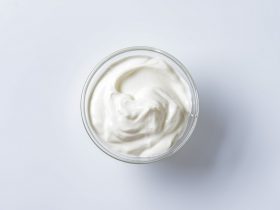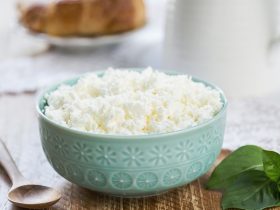A common question during pregnancy is about which foods are safe to eat. Seafood is a common food craving during this time. However, many pregnant women are reluctant to eat all kinds of seafood because of reports of high levels of mercury and harmful effects to the baby.
Although being cautious with what you eat during pregnancy is good, there are a lot of seafood choices that are safe to eat. This includes shrimp, in general and even in cocktail. Shrimp contains low levels of mercury and is a good choice of seafood for pregnant mothers.
Seafood can provide pregnant women a lot of nutrients needed by their developing baby. Though it is true that some types of seafood should be avoided during pregnancy, others are actually beneficial. Therefore, it is helpful to understand why seafood is important to be included in a pregnant mother’s diet, as well as which seafoods are safe and which ones to actually avoid.
Benefits of Seafood Intake During Pregnancy

Essential fatty acids are lipids that are not able to be synthesized by the body and, therefore, must be ingested through the diet or from supplements. The essential fatty acids omega-3 and omega-6 are needed for physiologic functioning, including oxygen transport, energy storage, cell membrane function and regulation of cell proliferation (Coletta et al., 2010).
Omega-3 fatty acids can only be obtained from the diet. Requirements in pregnancy have not been established, but it is likely that requirements are higher than during the nonpregnant state (Greenberg et al., 2008).
Fetal brain development
Omega-3 fatty acids are of vital importance during pregnancy because they are building blocks of the fetal brain and retina. The most biologically active forms, docosahexaenoic acid (DHA) and eicosapentaenoic acid (EPA), are derived mainly from seafood (Coletta et al., 2010).
In 2010, Coletta et al. reported that maternal consumption of omega-3 fatty acids during pregnancy was associated with improved neurodevelopmental outcomes in the child. Likewise, Zhou et al. in 2017 stated that DHA is a critical component of brain grey matter and retinal phospholipids. Therefore, enough DHA supply during pregnancy is important for neural, visual and cognitive development of the fetus.
In addition, Hibbeln et al. (2019) made two systematic reviews about seafood consumption during pregnancy and came up with the following conclusions:
- “Consumption of a wide range of amounts and types of commercially available seafood during pregnancy is associated with improved neurocognitive development of offspring as compared to eating no seafood.”
- “Benefits to neurocognitive development began at the lowest amounts of seafood consumed (~4 oz/wk) and continued through the highest amounts, above 12 oz/wk, some range up to >100 oz/wk.”
Failure to provide sufficient amounts of key nutrients may result in lifelong impairment in cognitive development and mental health. Seafood is a rich source of iodine, vitamin B12, iron, vitamin D, zinc, manganese, and omega-3 and omega-6 fatty acids, which are essential for optimal fetal and child neurodevelopment. Women can achieve optimal intake of these nutrients by eating seafood during pregnancy (Hibbeln et al., 2019).
Improved Pregnancy Outcomes
Omega-3 fatty acids may be critical for the timing of gestation and birth weight as well (Greenberg et al., 2008). Coletta et al. in 2010 also stated that adding more EPA in the diet of pregnant women may lead to reduced production of proinflammatory eicosanoids and increased production of prostacyclin (PGI2), which promotes myometrial relaxation. In addition, omega-3 fatty acids downregulate production of prostaglandins, thereby inhibiting the parturition process.
Therefore, an increased intake of foods containing omega-3 fatty acids during pregnancy has been associated with longer gestations and improved birth outcomes. In the analysis done by Middleton et al. in 2018, a reduction in preterm birth <37 weeks and early preterm birth <34 weeks were found among women who received omega-3 fatty acids during pregnancy, compared to those who did not. Koletzko et al. in 2008 concluded in its review that the consumption of long chain polyunsaturated fatty acids (LCPUFA) in pregnant women decreases the risk of early preterm birth.
Similarly, Carlson et al. in 2013 demonstrated that supplementation with 600 milligrams of DHA per day in pregnant women during the last half of gestation resulted in reduced early preterm births and very low birth weight infants. Meanwhile, Zhou et al. in 2017 found that DHA was able to prolong gestation by up to 2.9 days and increase birth weight up to 172 grams.
Recommendations for Seafood Intake in Pregnant Women
In the United States, many pregnant women eat very little amounts of fish due to concerns about the risks of contaminants and heavy metals like mercury to the unborn fetus. Therefore, they do not consume ample amounts of omega-3 fatty acids. Surveys have demonstrated that a lot of pregnant women consume little to no seafood, hence potentially depriving the fetus of much-needed nutrients (Coletta et al., 2010).
In 2007, Hibbeln et al. demonstrated that maternal seafood intake of less than 340 grams per week during pregnancy was associated with higher risk of their children being in the lowest quartile for verbal intelligence quotient (IQ), compared with those whose intake exceeded 340 grams per week.
Likewise, Innis & Friesen in 2008 made an investigation to determine if DHA deficiency in pregnant women contributes to poor infant development. They found that in the placebo group, more infants had a visual acuity below average, compared to the DHA intervention group.
Low maternal intake of seafood was also found to be associated with increased risk of suboptimum outcomes for prosocial behavior, fine motor skills, communication, and social development scores (Hibbeln et al., 2007).
Hence, consensus recommendations and practice guidelines from the World Association of Perinatal Medicine, the Early Nutrition Academy, and the Child Health Foundation now include the consumption of polyunsaturated fatty acids during pregnancy in sufficient amounts to support optimal visual and cognitive development of the fetus (Koletzko et al., 2008).
The US Food and Drug Administration (FDA) as well as the Environmental Protection Agency (EPA) both advise an intake of 1 to 2 servings of seafood per week in all pregnant women, to achieve at least 200 milligrams of DHA per day. These recommendations were also adopted by the American College of Obstetricians and Gynecologists (ACOG) (Coletta et al., 2010).
Is Shrimp Cocktail Safe to Eat While Pregnant?

Methylmercury is a known neurotoxin, and the brain of the fetus is extremely sensitive to it. Hence, pregnant women should limit their exposure to 1 to 2 servings of seafood per week, as recommended by the FDA and EPA (Coletta et al., 2010). Pregnant women should also avoid fish and shellfish with high mercury content, including fresh tuna and yellowtail. Low mercury alternatives like salmon, crab and shrimp can be consumed more regularly (Tam et al., 2010).
According to the US FDA, shrimp is under the “best choices” list for seafood consumption in pregnant women. While a mercury level of 0.1 ppm is considered high and potentially toxic to humans, shrimp only contains an average of 0.009 ppm; It is considered nontoxic and is therefore safe to eat during pregnancy.
Shrimp cocktail is a dish where shrimp are cooked by boiling or steaming, and then immediately chilled, and served cold. It is safe to eat by pregnant women as long as the shrimp are properly cooked.
It can be served with either Marie Rose or seafood cocktail sauce. However, while a typical cocktail sauce would be a mixture of ketchup, horseradish, hot sauce, Worcestershire sauce and lemon juice, a Marie Rose sauce would have mayonnaise as one of its ingredients.
Pregnant women should remember, therefore, to check if the mayonnaise used in the cocktail sauce was made from pasteurized milk. If yes, then the shrimp cocktail with sauce is completely safe for them to consume.
Shrimp Safety Tips
How to Choose Shrimp
- Choose fresh shrimp that has no fishy odor, is pearl colored, and stored for display on a thick bed of ice.
- Never buy frozen shrimp that is soft or has been partially defrosted.
- Never buy any torn or broken bags, or those crushed on the edges.
- Avoid packages with a layer of frost or ice crystals, which indicates thawing and refreezing.
- Some refrigerated seafood may have temperature indicators on their packaging labels. Always check these when present to make sure that the product was stored at the proper temperature.
- When getting shrimp from local waters, make sure to stay updated on regional advisories to avoid fishing in polluted waters.
Defrosting
- Defrost only an enough amount of shrimp that will be used. Never defrost and refreeze shrimp.
- Once defrosted, cook the shrimp quickly.
- Do not store shrimp in the refrigerator for more than a couple of days after defrosting.
- Store any leftovers and wrap them securely. Be sure to eat them within 3 days.
Cooking
- Cooking is the most effective method of inactivating parasites that may be potentially contained in seafood (Tam et al., 2010).
- Cook seafood to an internal temperature of 145oF.
- Shrimps must be cooked until the flesh becomes firm and clear.
- Spoiled seafood can have fishy, sour, rancid, or ammonia odors after cooking. Never eat raw or cooked seafood that has these smells.
Which Shrimp Dishes to Avoid During Pregnancy
Avoid all shrimp dishes that are uncooked. There is a risk of developing food-borne illnesses from raw foods and it could be even more dangerous to an unborn child. Therefore, pregnant women should avoid raw shrimp found in sushi or sashimi for the duration of the 9 months of pregnancy.
Shrimp that are undercooked, or only cured, can still harbor harmful bacteria and are not safe. Hence, they should not be eaten by pregnant women. For this reason, shrimp ceviche should be avoided, as the shrimp in this dish are cured by lime or lemon acid and not cooked with any heat.
Shrimp carpaccio are wafer-thin, raw, seasoned slices of shrimp. Again, any raw shrimp, including this dish, should be avoided by pregnant women.
Mexican shrimp cocktail is the only variation of shrimp cocktail that is unsafe for pregnant women. It uses raw shrimp and is, therefore, not recommended for consumption during pregnancy.
Final Thoughts
A healthy maternal diet during pregnancy means a healthy baby. Shrimp and other seafood are part of a healthy, balanced diet because they contain nutrients needed for the baby’s growth.
Shrimp cocktail and all dishes using cooked shrimp are safe to eat during pregnancy. However, keep in mind that seafood intake should be limited to 1 or 2 servings a week to avoid possible overexposure to methylmercury.
Avoid all kinds of raw shrimp and seafood for the whole duration of pregnancy. When in doubt, always talk to your physician to make sure that your food cravings will not make you or your baby ill.
References
- https://www.healthline.com/health/pregnancy/can-pregnant-women-eat-shrimp/
- https://www.fda.gov/food/consumers/advice-about-eating-fish
- https://americanpregnancy.org/healthy-pregnancy/is-it-safe/eating-shrimp-pregnancy-9950/
- https://www.fda.gov/food/buy-store-serve-safe-food/selecting-and-serving-fresh-and-frozen-seafood-safely
- Carlson, S., Colombo, J., Gajewski, B., Gustafson, K., Mundy, D., Yeast, J., …, & Shaddy, D. (2013). DHA supplementation and pregnancy outcomes. The American Journal of Clinical Nutrition 97(4), 808-815. doi: 10.3945/ajcn.112.050021
- Coletta, J., Bell, S., & Roman, A. (2010). Omega-3 fatty acids and pregnancy. Reviews in Obstetrics & Gynecology 3(4), 163-171.
- Greenberg, J., Bell, S., & Ausdal, W. (2008). Omega-3 fatty acid supplementation during pregnancy. Reviews in Obstetrics and Gynecology 1(4), 162-169.
- Hibbeln, J., Davis, J., Steer, C., Emmett, P., Rogers, I., Williams, C., & Golding, J. (2007). Maternal seafood consumption in pregnancy and neurodevelopmental outcomes in childhood (ALSPAC study): An observational cohort study. The Lancet 369(9561), 578-585. doi: 10.1016/S0140-6736(07)60277-3
- Hibbeln, J., Spiller, P., Brenna, J. T., Golding, J., Holub, B., Harris, W., …, & Carlson, S. (2019). Relationships between seafood consumption during pregnancy and childhood and neurocognitive development: Two systematic reviews. Prostaglandins, Leukotrienes & Essential Fatty Acids 151, 14-36. doi: 10.1016/j.plefa.2019.10.002
- Innis, S., & Friesen, R. (2008). Essential n-3 fatty acids in pregnant women and early visual acuity maturation in term infants. The American Journal of Clinical Nutrition 87(3), 548-557. doi: 10.1093/ajcn/87.3.548
- Koletzko, B., Lien, E., Agostoni, C., Bohles, H., Campoy, C., Cetin, I., …, & Uauy, R. (2008). The roles of long-chain polyunsaturated fatty acids in pregnancy, lactation and infancy: Review of current knowledge and consensus recommendations. Journal of Perinatal Medicine 36(1), 5-14. doi: 10.1515/JPM.2008.001
- Middleton, P., Gomersall, J., Gould, J., Shepherd, E., Olsen, S., & Makrides, M. (2018). Omega-3 fatty acid addition during pregnancy. Cochrane Database of Systematic Reviews. https://doi.org/10.1002/14651858.CD003402.pub3
- Tam, C., Erebara, A., & Einarson, A. (2010). Food-borne illnesses during pregnancy. Canadian Family Phyisican 56(4), 341-343.
- Zhou, Y., Li, H., Trasande, L., Wang, L., Zhang, Y., Si, K., …, & Liu, J. (2017). A correlation study of DHA intake estimated by a FFQ and concentrations in plasma and erythrocytes in mid- and late pregnancy. Nutrients 9(11), 1256. doi: 10.3390/nu9111256




